
-
Find the right food for your petTake this quiz to see which food may be the best for your furry friend.Find the right food for your petTake this quiz to see which food may be the best for your furry friend.Featured products
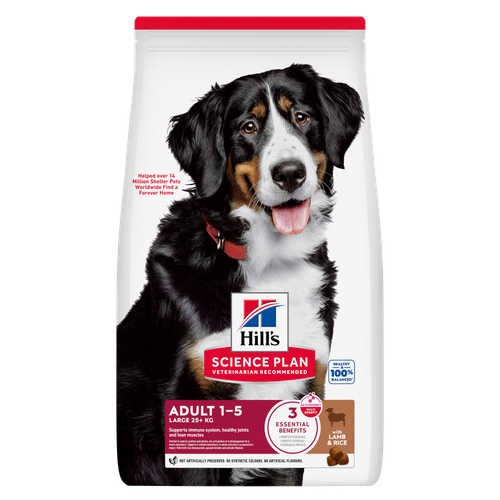 Large Breed Adult Dog Food
Large Breed Adult Dog FoodHill's Science Plan Large Breed Adult Dog Food with Lamb & Rice is a complete pet food, specially formulated with ActivBiome+ Multi-Benefit Technology.
This food is specifically designed to fuel the energy needs of large breed dogs during the prime of their life.Shop Now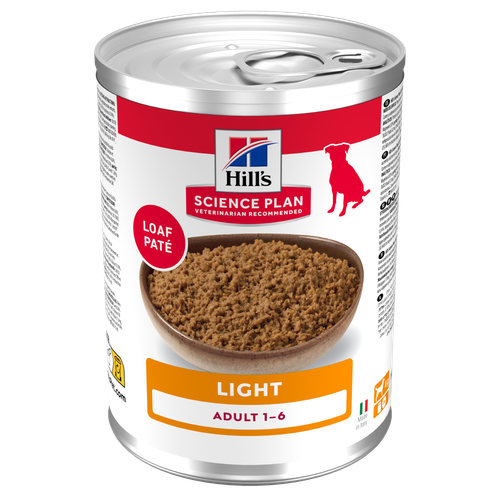 Adult Light Dog Food
Adult Light Dog FoodHill's Science Plan Light Adult Wet Dog Food is a complete premium pet food for adult dogs that tend to gain weight easily. This deliciously smooth loaf is formulated to deliver the appropriate amount of energy to support weight maintenance in adult dogs.
Shop Now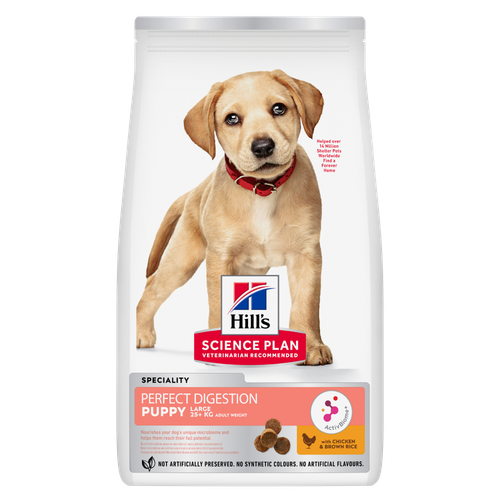 Perfect Digestion Large Breed Puppy Food
Perfect Digestion Large Breed Puppy FoodPrecisely balanced nutrition with Hill's ActivBiome+ prebiotic blend actively contributes to supporting digestive health and overall wellbeing to help your pet feel their best
Shop NowFeatured products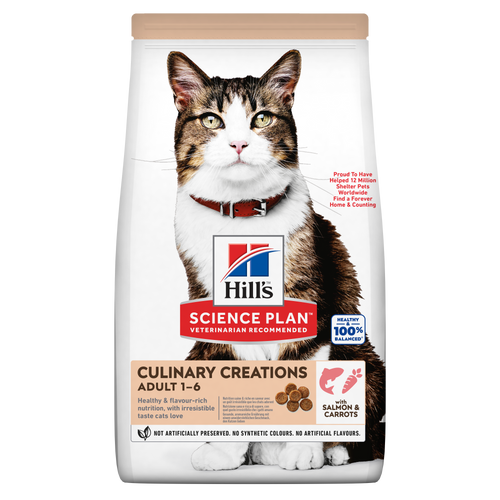 CULINARY CREATIONS ADULT CAT FOOD
CULINARY CREATIONS ADULT CAT FOODHill's Science Plan CULINARY CREATIONS Adult cat food with Salmon & Carrots was formulated to provide a great-tasting experience to cats. Its delicious flavour and texture are combine with essential nutrients to support cats' optimal health during the prime time of their life. Specially formulated with high-quality salmon protein, essential taurine for heart health & balanced minerals to support kidneys & bladder.
Shop Now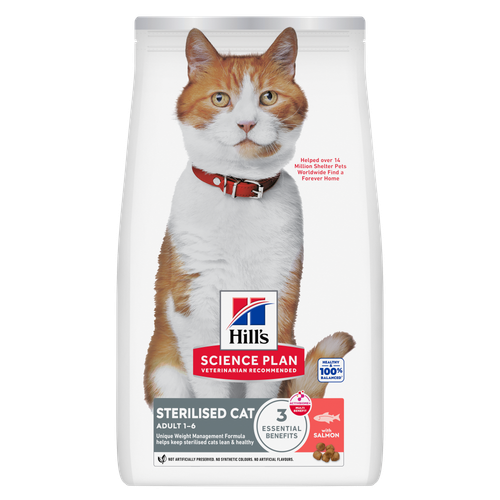 Sterilised Adult Cat Food
Sterilised Adult Cat FoodHill's Science Plan Adult Sterilised Cat Dry Food with Salmon is specially formulated with ActivBiome+ Multi-Benefit Technology. It is a precisely balanced nutrition, tailored to meet the needs of sterilised cats, to help keep sthem lean & healthy.
Shop Now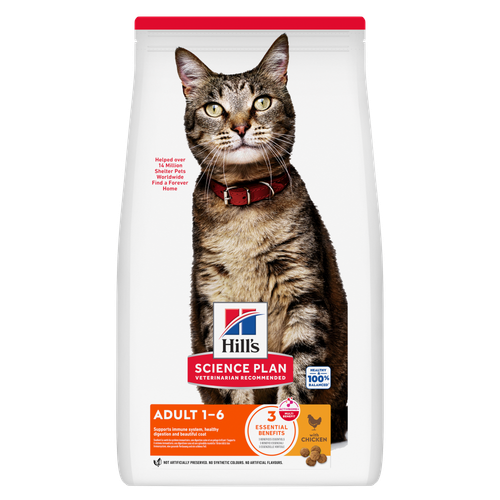 Adult Cat Food
Adult Cat FoodHill's Science Plan Adult Cat Food with Chicken is a complete pet food, specially formulated with ActivBiome+ Multi-Benefit Technology.
This food is specially formulated to fuel the energy needs of cats during the prime of their life.Shop Now -
Dog
- Dog Tips & Articles
-
Health Category
- Weight
- Food & Environmental Sensitivities
- Urinary
- Digestive
- Joint
- Kidney
-
Life Stage
- Puppy Nutrition
- Adult Nutrition
- Senior Nutrition
Cat- Cat Tips & Articles
-
Health Category
- Weight
- Skin & Food Sensitivities
- Urinary
- Digestive
- Kidney
-
Life Stage
- Kitten Nutrition
- Adult Nutrition
Featured articles Microchipping: The Facts | Hill's Pet
Microchipping: The Facts | Hill's PetThe government has announced that as of April 2016, all dogs in the UK must be microchipped by law.
Read More Pet Nutrition: What Makes "Healthy" Pet Food Healthy? | Hill's Pet
Pet Nutrition: What Makes "Healthy" Pet Food Healthy? | Hill's PetIn people, the right diet is very important. If you are eating the wrong way for your metabolism, activity level, age and lifestyle you could end up with health issues.
Read More The Incredible Science Behind Your Pet's Microbiome
The Incredible Science Behind Your Pet's MicrobiomeLearn what your pet's microbiome is, how it contributes to your pet's gut and overall health, and why nutrition is important in maintaining healthy microbiomes.
Read More -


Because of their little and darling – or small and scrappy – stature, they are experts at inspiring the most coddling. They can especially excel at eliciting more treats out of their owners. This means that owners have to be on their guard, because small and miniature dogs are just as likely to be overweight or obese as their larger-breed counterparts.
With weight issues tipping the scales as one of Europe's biggest pet problems, and one that's growing, it’s no wonder that vets are getting nervous. After all, canine obesity is a major contributing factor in canine health problems such as:
- Arthritis
- Diabetes
- Pancreatitis
- Breathing problems
- Shortened life expectancy
Since some small breeds are already prone to respiratory concerns (especially those with shorter noses, such as Pugs), even a little bit of excessive weight can be cause for concern.
Such serious health risks make it clear that we should help our four-legged friends keep at a healthy weight, but what causes little dogs to gain weight in the first place?
Blame the breed?
Some small dog breeds are renowned for their propensity to pack on the pounds:
- Cairn Terriers
- Dachshunds
- Scottish Terriers
- Cavalier King Charles Spaniels
- Cocker Spaniels
If you have a small dog that's prone to big weight gain due to breed, neutering status, begging ability or other factors, you'll have to be extra-diligent in avoiding excess baggage.
He is what he eats
If your dog eats meals that are high in calories, he’s likely to start looking a trifle hefty after a while, unless he’s a real fitness fanatic. Unfortunately, sporting that chubby look can seriously impact his long-term health. For most little dogs, combining a calorie-controlled kibble or canned food with regular exercise is a good way to keep fit and healthy.
Portion it out
Portion control can be a big problem when it comes to feeding little dogs. To avoid problems, some people find it helpful to measure out a daily food and snack amount into a separate container each day, and then feed their dog only what’s in the container, nothing more. Others find that calorie counting is worth the extra effort, especially if they already do it for themselves. Still others prefer to measure food out at each meal.
Whatever your method, controlling the portion of your dog’s daily ration is important to making sure he is getting just the right amount. Start with the amount listed on the label of your dog’s food, and adjust as needed from there.
What about snacks?
Pets (and people) gain weight when they consume more calories than they burn. Portion control is key to avoiding weight gain when it comes to a pooch's main meals, but we can't forget about the snack-factor. Small dogs simply need smaller snacks. Find treats for small dogs with low calories, or break larger treats into smaller pieces to satisfy your small friend without piling on the kcals.
Labels will tell
Carefully checking the labels on your dog’s food and treats will help you fight excessive weight gain. There you’ll find a full set of instructions for proper feeding amounts. Make sure to feed for your dog’s ideal, not current, poundage. Remember that everything your dog eats, including treats, factor into his daily calorie intake – which ultimately affects his waistline.


Tasty Tips
What’s BCS?
Body Condition Score, or BCS, is the ratio of lean to fat (or adipose) body mass. Lean body mass is the weight of your dog’s bones, muscles, etc. Fat body mass, or adipose tissue, is simply that – fat. The higher the BCS, the more weight your dog will need to lose, with the ideal being a BCS of 3 out of 5. If your dog’s BCS is more than 3, you should ask your vet for a healthy weight-loss plan. Here is a handy tool to monitor your dog’s BCS at home:
Body Condition Score

| Ideal-3 | |
|---|---|
| Ribs | Easily felt with slight fat cover |
| Tail base | Smooth contour with slight fat cover |
| Side view | Abdominal tuck |
| Overhead view | Well-proportioned waist |

| Overweight-4 | |
|---|---|
| Ribs | Difficult to feel under moderate fat cover |
| Tail base | Some thickening, bone palpable under moderate fat cover |
| Side view | No abdominal tuck |
| Overhead view | Back is slightly broadened at waist |

| Obese-5 | |
|---|---|
| Ribs | Difficult to feel under thick fat cover |
| Tail base | Thickened and difficult to feel under thick fat cover |
| Side view | No waist, fat hangs from abdomen |
| Overhead view | Back is markedly broadened |
Tips for workout success
- Start slow
Aim for manageable goals; slow and steady weight loss is the aim here. He’ll need to take it slow at the beginning to avoid over-exerting himself. Work with your vet to determine a healthy ideal weight and exercise plan for your little one. It may take months for your pooch to get rid of his spare tyre so don’t get discouraged! - Think outside the box
…or just get outside! One bonus of helping your pet lose weight is the fun new activities you can try together. Maybe take up swimming at your local lake for low-impact exercise that will be easy on your dog's joints – as well as yours! If it’s cold out, supervise your small dog carefully while letting him doggie-paddle to his heart's content in a cool (not cold) bath. - Pick something you like, too
Not a runner? Never fear! You won't need to put yourself through the paces just to slim down your dog. Throwing a ball around, going for a long stroll, or navigating an agility course are all great alternatives to going for a jog. Your little companion will love doing whatever you do. - Resist those eyes!
When your sweet little pup is gazing up at you, pleading for you to drop that tasty titbit into his waiting jaws, be strong! Less calories in means less excess weight, and calorie-rich human food is one of the big culprits when it comes to canine weight gain. Although it may feel like a testament to your culinary prowess, he’ll be better off without.


One of our staff authors prepared this article for you
Related products
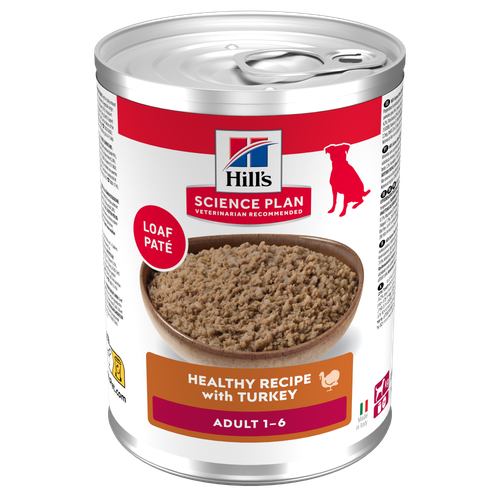
Hill's Science Plan Adult Wet Dog Food with Turkey is a complete premium pet food for adult dogs from 1 year. This deliciously smooth minced turkey loaf is formulated to deliver the appropriate amount of energy to support the needs of adult dogs.

Hill's Science Plan Light Adult Wet Dog Food is a complete premium pet food for adult dogs that tend to gain weight easily. This deliciously smooth loaf is formulated to deliver the appropriate amount of energy to support weight maintenance in adult dogs.

Hill's Science Plan Large Breed Adult Dog Food with Lamb & Rice is a complete pet food, specially formulated with ActivBiome+ Multi-Benefit Technology.
This food is specifically designed to fuel the energy needs of large breed dogs during the prime of their life.

Precisely balanced nutrition with Hill's ActivBiome+ prebiotic blend actively contributes to supporting digestive health and overall wellbeing to help your pet feel their best
Related articles

Dog obesity is a significant problem - learn more about helping your dog become trimmer and healthier through improved nutrition.

Gurgling tummies in turmoil are not good news for pets. Owners who have to clean up the unfortunate consequences, digestive problems are one of the rare downsides to owning a pet.
Discover the causes, signs, and treatments of kidney disease in dogs and find methods of supporting your dog's kidney health. Learn more at Hill's Pet.

Learn to see the signs of an upset stomach in your dog, understand the triggers and explore some possible solutions.

Put your dog on a diet without them knowing
Our low calorie formula helps you control your dog's weight. It's packed with high-quality protein for building lean muscles, and made with purposeful ingredients for a flavourful, nutritious meal. Clinically proven antioxidants, Vitamin C+E, help promote a healthy immune system.
Put your dog on a diet without them knowing
Our low calorie formula helps you control your dog's weight. It's packed with high-quality protein for building lean muscles, and made with purposeful ingredients for a flavourful, nutritious meal. Clinically proven antioxidants, Vitamin C+E, help promote a healthy immune system.

